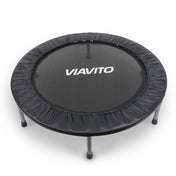With the advent of flashy new rowing machines and home workouts becoming more popular than ever, the humble rower is one of the most sought after pieces of equipment on the market. Why? The rowing machine not only delivers a great full-body cardiovascular workout but can also help to build strength in specific muscle groups. So to help you get a better grasp on what main muscle groups rowing machines work and how to maximise muscular benefits when rowing...
What muscle groups does rowing target?
You might already be familiar with the different stages of the rowing technique. Each phase of the movement works a different set of muscles - contributing to this truly full-body form of exercise. We’re going to break down every stage and highlight the key muscle groups targeted.
The catch
This is the most muscle-light phase. Simply set up your body for the more intense muscle movements.
- Flexor muscles: the muscles of your fingers are gripping the bar in the most forward position of the row.
- Triceps: are helping to support and extend your arms towards the front of the rower.
- Abs: with the hinge at the hip your abs are working to stabilise your back and keep it relaxed.
The drive
The drive is the ‘biggest’ part of the row, with your legs taking the majority of the load for the push back. But whilst the power comes from your quads and hamstrings, the upper body muscles work to stabilise the movement.
- Quads and hamstrings: your legs are pushing you back, with your quads providing the explosive power and glutes/hamstrings contract extending the hip.
- Back: your back comes towards the upright position, causing your torso to open.
- Biceps: engaging to bring the handle back towards your abdomen. Almost like a wide bicep curl movement.
- Shoulders: throughout this whole section the shoulders are contracting backwards to give that ‘pulling’ motion.
The finish
Now you’ve pushed back with force, your back and abs really come into play, ensuring that your body stays within a comfortable range and preventing you from scooping the movement.
- Abdomen and back: work together to stabilise the body as you lean slightly back at the top of the movement.
- Shoulders: reach full contraction when the handle comes to just below the chest bone.
- Biceps: help to internally rotate the arms at the top of the movement, Reaching the ‘top of the bicep curl’ when the handle is fully contracted.
The recovery
The key muscle here is the triceps which drives your hands away from the finish position. Your legs will feel a light contraction on the way back to the catch.
- Triceps: your triceps are essential for helping the arms to move forward. Moving them away from the body and back to the catch position.
- Abdomen: contracts forward to support the move back to the catch.
- Hamstrings & calves: these work together, contracting to bring your legs back to the catch position.
How to feel the burn of rowing in the right way
With resistance added, rowing does engage all of the muscles above. However, it should not be used as a primary way of building muscle solely. While it can contribute to muscle growth, the best combination is with some form of weight lifting too. Combining the cardiovascular and fat-burning effects of rowing with resistance training will help to build lean muscle mass, giving you that ‘toned’ look you may be looking for. So how do you make the most out of the contribution rowing can make? Here are a few tips:
- The muscle groups only get worked well when using the correct form. This means, maintaining a straight back throughout, engaging the correct posture at each phase, not leaning back too far or bringing the handle too high.
- Do not overdo it. Despite being a low impact way to add cardio into your routine, rowing can still deliver a high-effort workout. It’s always best to balance it out with other forms of training rather than just adding onto your current workout routine.
- Row intuitively. Start slowly at first, really feeling into every muscle working throughout the movement. Once you can feel a ‘mind-muscle connection’ you can add resistance and speed.
- There’s no ‘right time’ to row. Whilst many claim that ‘fasted’ cardio (first thing in the morning before consuming anything) is the best for fat loss, there really is no ‘right time’. Integrate rowing into your routine at a time that suits you best and that doesn’t feel like a chore.
Now you have all the tools you need to get the cardiovascular and strength benefits rowing can bring. We hope that you feel well equipped when going into your first rowing workout or that you have a better understanding of how to tweak your technique to get muscular benefits. To explore our products, check out our range.
To discover what type of rowing machine is the best investment for you, why not check out our buyer’s guide. Or for more rowing info, check out our features section on fitness training.

